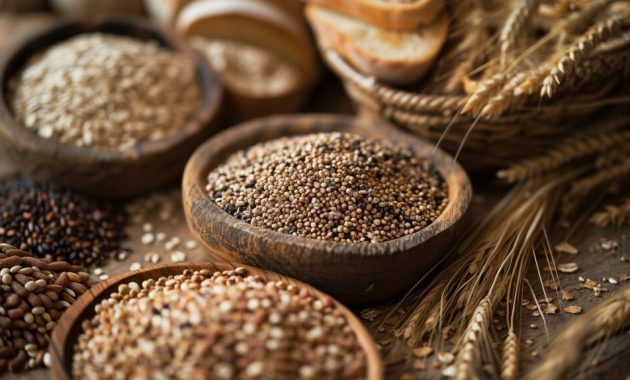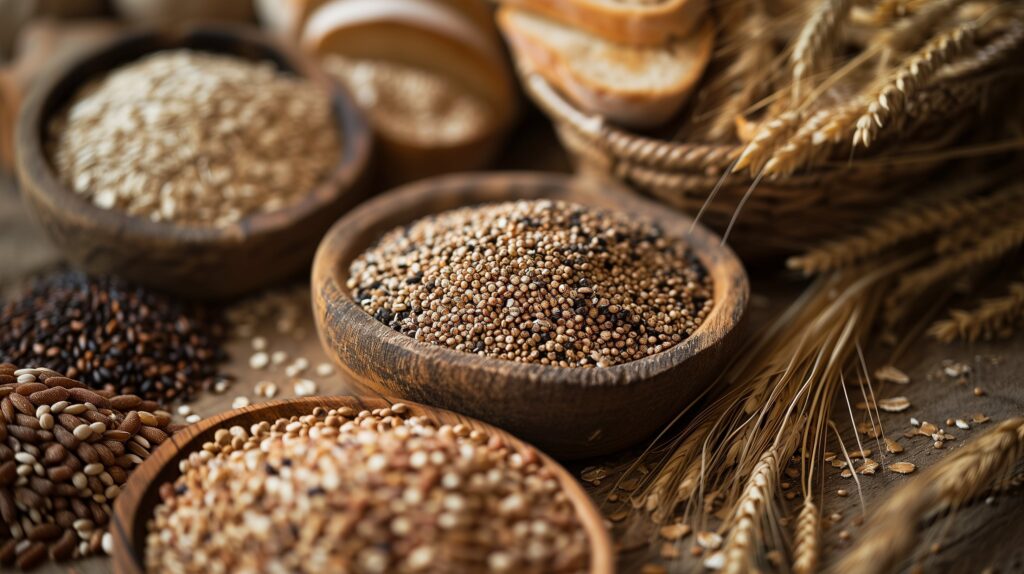
How to Choose Whole Grains That Support Diabetes: A Guide to Healthy Eating
The world of nutrition can feel complex, especially when managing a health condition like diabetes. One area that often sparks confusion is carbohydrate intake, and specifically, the role of grains. For individuals with diabetes, understanding how to choose whole grains that support diabetes is crucial. This article will provide a comprehensive guide, breaking down the science, offering practical advice, and empowering you to make informed dietary choices.
The core principle here is simple: not all grains are created equal. Refined grains, like white bread and white rice, are stripped of their bran and germ, leaving behind primarily starch. This leads to a rapid spike in blood sugar levels, which can be detrimental for those with diabetes. Whole grains, on the other hand, retain all three parts of the grain: the bran, the germ, and the endosperm. This makes them a powerhouse of nutrients, fiber, and slow-releasing carbohydrates, offering significant benefits for blood sugar control.
Understanding the Impact of Grains on Blood Sugar
Before diving into the specifics of choosing whole grains, it’s important to grasp how different grains affect blood sugar. When you consume carbohydrates, your body breaks them down into glucose, which is then used for energy. For people with diabetes, this process is either impaired (in type 2 diabetes) or nonexistent (in type 1 diabetes), leading to elevated blood sugar levels. The glycemic index (GI) and glycemic load (GL) are tools used to measure how quickly a food raises blood glucose.
Refined grains have a high GI, meaning they cause a rapid spike in blood sugar. This forces the pancreas to work harder to produce insulin (in type 2 diabetes) or requires insulin injections (in type 1). This can lead to insulin resistance over time and make managing diabetes more challenging. Whole grains, with their lower GI, are digested more slowly. This results in a gradual and sustained release of glucose into the bloodstream, preventing significant blood sugar fluctuations.
The Benefits of Whole Grains for Diabetes Management
Choosing whole grains is an excellent strategy for people with diabetes. They offer a range of benefits that contribute to better blood sugar control and overall health. These include:
- Improved Blood Sugar Control: The high fiber content in whole grains slows down the absorption of glucose, preventing rapid spikes and crashes in blood sugar levels. This is a primary reason why it is important to know how to choose whole grains that support diabetes.
- Increased Insulin Sensitivity: Whole grains have been linked to improved insulin sensitivity, which means your body is better able to use the insulin it produces or receives, leading to better blood sugar management.
- Enhanced Heart Health: Whole grains are rich in soluble fiber, which can help lower LDL (bad) cholesterol levels, reducing the risk of heart disease, a common complication of diabetes.
- Promoted Weight Management: The fiber in whole grains promotes satiety, helping you feel fuller for longer, which can aid in weight management, a key factor in diabetes control.
- Rich in Nutrients: Whole grains are packed with essential vitamins, minerals, and antioxidants that support overall health and well-being.
Identifying Whole Grains: A Practical Guide
Navigating the grocery store aisles can be tricky. Many products are marketed as “whole grain,” but it’s crucial to read labels carefully. Here’s how to choose whole grains that support diabetes:
- Read the Ingredient List: Look for “whole grain” or “whole wheat” as the first ingredient on the label. This is the most reliable indicator that the product contains a significant amount of whole grains.
- Check for Added Sugars: Many processed whole-grain products contain added sugars to enhance flavor. Be mindful of the sugar content and choose options with minimal or no added sugars.
- Look for Fiber Content: Whole grains are naturally high in fiber. Aim for products that provide at least 3 grams of fiber per serving. This is a good indicator of a whole-grain product.
- Beware of Misleading Labels: Products labeled “multigrain” or “wheat” may not necessarily be whole grain. They could be a blend of refined grains. Always check the ingredient list.
Top Whole Grain Choices for Diabetes
Now, let’s explore some excellent whole grain options that are beneficial for people with diabetes:
- Oats: Oats, especially steel-cut or rolled oats, are a fantastic choice. They have a low GI and are rich in soluble fiber, which helps lower cholesterol and regulate blood sugar.
- Brown Rice: Brown rice is a good alternative to white rice. It is a whole grain that offers fiber and nutrients. It digests slowly, providing a steady release of glucose.
- Quinoa: Quinoa is a complete protein and a good source of fiber. It has a low GI and is a versatile grain that can be used in many dishes.
- Barley: Barley is another excellent option, particularly hulled barley. It is high in fiber and has a relatively low GI.
- Whole Wheat Bread and Pasta: Choose whole-wheat bread and pasta over their refined counterparts. Make sure “whole wheat” is the first ingredient.
- Buckwheat: Despite its name, buckwheat is not related to wheat. It is a gluten-free grain that is rich in fiber and nutrients, making it a good choice.
Incorporating Whole Grains into Your Diet
Integrating whole grains into your diet is easier than you might think. Here are some practical tips:
- Start with Breakfast: Begin your day with a bowl of oatmeal or whole-grain cereal. These provide sustained energy and help regulate blood sugar throughout the morning.
- Swap White Rice: Replace white rice with brown rice or quinoa in your meals.
- Choose Whole-Wheat Bread: Opt for whole-wheat bread for sandwiches and toast.
- Experiment with Different Grains: Try incorporating barley, farro, or other whole grains into your soups, salads, and side dishes.
- Plan Your Meals: Make whole grains a regular part of your meal planning process. Prepare them in advance for quick and easy meals.
- Portion Control: While whole grains are beneficial, portion control is still important. Be mindful of how much you are eating at each meal.
Addressing Common Concerns
Some people with diabetes may have concerns about including grains in their diet. Here’s a look at some common questions:
- Gluten Sensitivity: If you have celiac disease or gluten sensitivity, choose gluten-free whole grains like quinoa, brown rice, and buckwheat.
- Carb Counting: It is important to consider carbohydrate intake when managing diabetes. Work with a registered dietitian or certified diabetes educator to learn how to count carbs and balance your meals effectively.
- Variety is Key: Don’t limit yourself to one type of whole grain. Experiment with different options to get a variety of nutrients and flavors.
The Importance of Consulting Professionals
Managing diabetes is a complex process, and dietary changes should always be discussed with a healthcare professional. A registered dietitian or certified diabetes educator can provide personalized advice based on your individual needs and health status. They can help you develop a meal plan that incorporates whole grains in a way that supports your blood sugar goals.
In summary, learning how to choose whole grains that support diabetes is essential for effective blood sugar control and overall health. By understanding the glycemic index, reading food labels carefully, and incorporating a variety of whole grains into your diet, you can make informed choices that support your well-being. Remember to consult with a healthcare professional for personalized guidance and support on your diabetes management journey. Embracing a diet rich in whole grains is a positive step toward living a healthier and more fulfilling life with diabetes.
The information provided in this article is intended for general knowledge and informational purposes only, and does not constitute medical advice. It is essential to consult with a qualified healthcare professional for any health concerns or before making any decisions related to your health or treatment.
[See also: Related Article Titles]

